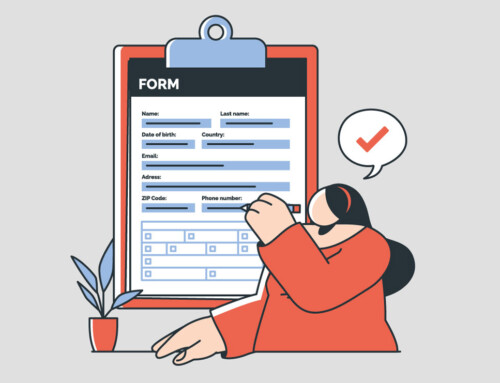Contents
Wondering about how well your law firm is performing and where it’s headed? Tracking law firm KPIs is the cornerstone of understanding your firm’s financial health, operational efficiency, and overall success. These metrics provide critical insights into profitability, client satisfaction, and efficiency while guiding strategic decisions to improve performance. KPIs help firms set measurable goals, track progress, and stay competitive. You can optimize operations and ensure long-term growth by focusing on metrics like revenue per lawyer and client retention rates. This blog outlines essential KPIs and explains how tools like RunSensible simplify tracking for better results.
Key KPIs to monitor:
- Financial: Revenue per lawyer, profit margin, and collection rate.
- Client-focused: Satisfaction scores, retention rates, and referral rates.
- Operational: Case completion rate, timekeeper utilization, and overhead costs.
- Employee-related: Satisfaction scores, turnover rates, and training hours.
Financial KPIs
Financial KPIs offer a clear view of how well your law firm is performing in terms of profitability and efficiency. You can gauge your firm’s financial health and make data-driven decisions to improve performance by tracking revenue per lawyer and profit margin.
A. Revenue Per Lawyer
Revenue per lawyer is calculated by dividing the firm’s total revenue by the number of lawyers. According to industry benchmarks, top-performing firms often exceed $200,000 in revenue per lawyer annually. This KPI is critical for evaluating individual productivity and overall firm efficiency.
B. Profit Margin
The profit margin is the percentage of revenue left after deducting expenses. A profit margin of 20-30% is considered healthy for law firms, while firms in specialized practice areas may aim for higher margins.
C. Average Billing Rate
This KPI measures the average hourly rate billed by attorneys. Industry averages vary widely, ranging from $200 to $800 per hour, depending on location and practice area. Monitoring this ensures competitive and profitable pricing.
D. Collection Rate
The collection rate, a crucial metric, represents the percentage of invoiced amounts that clients actually pay. The industry average is around 85%, but firms with efficient billing and automated systems often exceed 90%, significantly reducing bad debt. This metric directly impacts the firm’s cash flow.
E. Client Acquisition Cost
CAC is calculated by dividing the total marketing and sales expenses by the number of new clients acquired. Industry reports suggest that the average CAC for law firms is between $3,000 and $5,000 per client, depending on the practice type and firm size. Tracking this KPI ensures that marketing strategies are cost-effective and deliver measurable ROI.
Client-Related KPIs
Client-related KPIs provide actionable insights into client satisfaction, retention, and acquisition, helping law firms optimize their client management strategies. These metrics measure client satisfaction, loyalty, and growth, which are key to sustainable success in law firm management.
A. Client Satisfaction Score
This KPI is often measured through Net Promoter Scores (NPS) or direct surveys. According to industry benchmarks, firms with NPS above 70 are considered top-tier in client satisfaction. High satisfaction scores correlate with increased referrals and long-term loyalty.
B. Client Retention Rate
Tracking the percentage of returning clients highlights how well your firm maintains strong relationships. Retention rates in law firms average around 60-70%, but top-performing firms achieve rates of 80% or higher. Retaining existing clients is up to five times less expensive than acquiring new ones, making this KPI a critical measure of client relationship management.
C. Number of New Clients
This metric tracks the growth of your client base. A consistent increase in new clients, primarily through targeted campaigns, reflects a strong market presence. Firms focusing on digital marketing strategies often report 20-30% year-over-year growth in new client numbers.
D. Referral Rate
The referral rate measures how often current clients recommend your services. Client referrals account for 30-50% of new business for many law firms. Tracking the referral rate helps estimate how satisfied clients are with your services. Firms with strong client satisfaction scores often see referral rates above 40%, indicating high levels of trust and advocacy.
Operational KPIs
Operational KPIs are essential for law firms, offering data-driven insights into efficiency, performance, and resource utilization. By evaluating how effectively cases are handled, time is managed, and resources are allocated, these metrics help identify areas for improvement. Operational KPIs enable firms to streamline workflows, reduce bottlenecks, and enhance productivity, ensuring optimal operational performance and continuous process improvement.
A. Case Completion Rate
This KPI tracks the percentage of cases closed within a specific timeframe. A case completion rate of 80% or higher is typically considered as efficient. Firms with streamlined processes often report even higher rates, ensuring faster client service and reducing caseload backlogs.
B. Average Case Duration
Monitoring how long it takes to close a case helps identify inefficiencies in your processes. The average duration for most cases ranges from 6 to 12 months, depending on the complexity and practice area. Firms that employ automated workflows and advanced case management systems often experience a reduction in duration by 20-30%.
C. Timekeeper Utilization Rate
This KPI measures how effectively billable hours are utilized by your legal team. Industry benchmarks suggest a utilization rate of 70-80% for billable hours. Tracking this KPI ensures your legal team is focusing on revenue-generating tasks while avoiding burnout.
D. Overhead Rate
The overhead rate tracks the proportion of revenue spent on operational expenses.
Overhead costs typically consume 20-40% of a law firm’s revenue. Firms that optimize operations with technology and outsourcing can reduce this rate by 10%, significantly boosting profitability.
E. Technology Utilization
Evaluating the adoption of legal tech tools highlights how well your firm leverages technology to streamline processes. Legal technology adoption, such as case management software and automated calendaring, can improve efficiency by 40%. Firms using integrated solutions often report a 25% increase in productivity, highlighting the importance of tracking this KPI.
Employee-Related KPIs
Employee-related KPIs are pivotal for assessing staff morale, productivity, and retention, providing valuable insights into your team’s overall health and effectiveness. A satisfied, engaged, and well-trained workforce forms the foundation of a thriving law firm. By tracking these metrics, firms can foster a motivated and high-performing team, ensuring alignment with strategic business objectives and long-term success.
A. Employee Satisfaction Score
Employee Satisfaction Scores measure morale and engagement through surveys or feedback. A high satisfaction score indicates a positive workplace culture. Employee satisfaction scores are typically measured on a scale of 1 to 10 or as a percentage. According to industry studies, firms above 80% report better client service and reduced turnover rates.
B. Turnover Rate
Tracking how often employees leave your firm helps identify retention challenges. The average turnover rate in the legal industry is 19%, but high-performing firms keep this number below 10%. Reducing turnover by even 5% can save tens of thousands of dollars annually in recruitment and training expenses.
C. Training Hours Per Employee
Investing in professional development is key to employee satisfaction and productivity. Monitoring training hours ensures your staff has the latest skills and knowledge. Firms that invest at least 40 hours annually in employee training report a 15-20% improvement in productivity. Continuous learning keeps your team competitive and engaged, particularly in an industry where legal knowledge evolves rapidly.
D. Billable Hours Per Lawyer
This KPI evaluates productivity by tracking how much each lawyer spends on billable tasks. The industry benchmark for billable hours per lawyer is around 1,800 to 2,000 annually. Tracking this metric helps ensure your firm meets revenue targets while avoiding employee burnout, a key factor in retaining top talent.
Leveraging RunSensible to Track KPIs
Tracking law firm KPIs is more effective with the right tools, and RunSensible provides an all-in-one solution to simplify the process. With its robust features, your firm can monitor performance metrics, gain real-time insights, and make data-driven decisions effortlessly.
A. Comprehensive Reporting Tools
RunSensible’s reporting tools allow you to track a wide range of KPIs like case completion rates, employee productivity, and client satisfaction. Firms using such tools report a 25-30% improvement in decision-making efficiency.
B. Customizable Dashboards
The platform’s dashboards can be tailored to your firm’s unique goals. This customization ensures that the most relevant KPIs, like revenue per lawyer or client retention rates, are always at your fingertips.
C. Automated Data Collection
RunSensible reduces manual errors by automating the collection of critical data. This feature saves time and ensures the accuracy of metrics like collection rates and billable hours. According to a recent study, firms using automated solutions save an average of 15 hours per month on administrative tasks.
D. Integration with Financial Systems
The software integrates seamlessly with financial tools, making it easy to track KPIs such as profit margins and client acquisition costs without juggling multiple platforms. This streamlined approach boosts data accuracy by 18% and simplifies reporting for leadership teams.
For firms looking to stay competitive and achieve sustainable growth, leveraging RunSensible ensures you’re equipped to track and optimize performance across every area of your practice. Whether it’s improving financial health, enhancing client satisfaction, or boosting employee productivity, RunSensible is the all-in-one solution for modern law firm management.
Conclusion
Tracking Key Performance Indicators (KPIs) is essential for understanding your firm’s progress and staying ahead in the competitive legal industry. KPIs provide a structured way to measure performance, from financial health to client satisfaction and operational efficiency. They turn raw data into actionable insights, helping firms make informed decisions that lead to sustained growth.
These KPIs highlight strengths and weaknesses and guide data-driven strategies to improve efficiency, enhance client satisfaction, and foster employee engagement. With automated tools, you can simplify tracking, automate data collection, and focus on the metrics that matter most to your goals.
RunSensible takes the complexity out of KPI tracking with features like automated data collection, real-time reporting, and customizable dashboards. It simplifies the process, enabling law firms to focus on the most relevant metrics and take strategic actions. For firms aiming to thrive in today’s fast-paced legal market, consistent law firm KPI monitoring is not optional—it’s a necessity for long-term success.
Track the Right KPIs to organize Your Law Firm’s Growth with Runsensible
Start tracking the right law firm KPIs today and unlock the full potential of your practice with RunSensible. you’ll have the tools to simplify KPI tracking, gain actionable insights, and make data-driven decisions that drive success.
Don’t wait—streamline your operations, enhance client satisfaction, and boost profitability now. Try RunSensible today and track your KPIs all at once.
FAQs:
1) What are law firm KPIs, and why do they matter?
Law firm KPIs (Key Performance Indicator) are measurable metrics that show how your firm is performing in key areas like finances, client relationships, and operations. They’re essential for making informed decisions and staying competitive.
2) How does tracking client retention rates benefit law firms?
Monitoring client retention rates helps firms understand how well they maintain client relationships. Retaining clients is significantly more cost-effective than acquiring new ones and ensures steady revenue.
3) How does tracking client retention rates benefit law firms?
Monitoring client retention rates helps firms understand how well they maintain client relationships. Retaining clients is significantly more cost-effective than acquiring new ones and ensures steady revenue.
4) What is a healthy profit margin for a law firm?
A profit margin of 20-30% is generally considered healthy, with some specialized practices achieving even higher margins depending on their niche and operational efficiency.
5) What benchmarks should firms aim for with collection rates?
The industry standard for collection rates is around 85%, but efficient firms with automated systems often exceed 90%, minimizing bad debt and improving cash flow.
6) What tools can simplify law firm KPI tracking?
Platforms like RunSensible offer features like automated data collection, customizable dashboards, and real-time reporting to streamline the process, making it easier to focus on critical KPIs.
Disclaimer: The content provided on this blog is for informational purposes only and does not constitute legal, financial, or professional advice.







